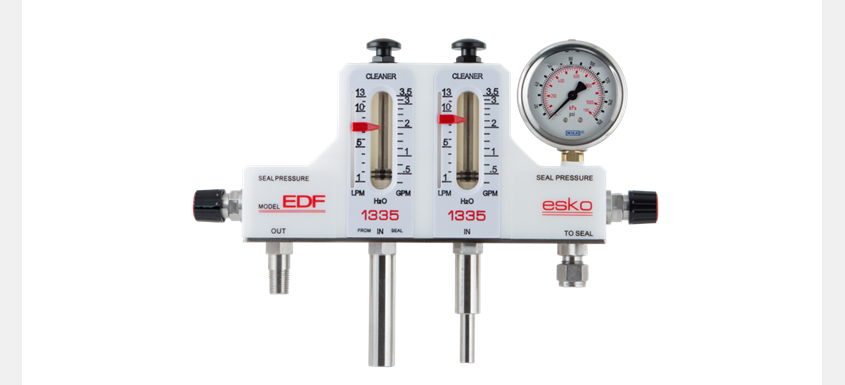Significant savings can result from a common-sense approach to addressing economic and environmental water-handling issues.
Seal water applications and best practices to manage costs of procuring and utilizing water and managing wastewater. Double mechanical seal monitoring is used for more precise water management for critical processes and other fluids (chemicals and effluents).
1. Reduce Water Related Costs
Water In – The costs associated with water procurement, filtering and pumping can add up quickly. A pulp and paper mill’s daily water use may be in the millions of gallons. Seal water meters designed for optimizing water consumption are key to cost savings. With diminishing global water availability, water intake management deserves close consideration.
Excess Water Removal - When excess water that is used for sealing, lubrication and cooling finds its way to the “fiber” side of the process it will end up in the drying process, in the recovery boiler or the wastewater treatment plant. Eliminating excess water in these processes can be costly. Preventing excess leaks can significantly reduce additional energy required to remove water in later stages.
Water Out – Managing water at earlier stages can reduce energy, chemical and manpower costs in the wastewater treatment process. Local city, county and state EPA will be pleased with wastewater reduction efforts.
2. Seal Water Control
Pulp and paper mills may have thousands of drive shafts that must be isolated from the process with seals. Seal types typically come in standard configurations of single/double mechanical seals and single/double packing seals.
Maintaining seal integrity between the process and stuffing box minimizes expenses associated with shutting down the process and rebuilding seals. Excessive heat is the primary reason for premature seal failure. Seal water maintains a barrier against the process and dissipates heat in the seal. When using water for cooling, some portion of the sealing water inevitably leaks into the process and excess is discharged into the wastewater system.
One approach to seal water control utilizes a flow meter in conjunction with a ball valve prior to the stuffing box. This provides a cooling effect but it’s difficult to adjust the flow rate. The better option is a purpose-built seal water monitor with a built-in flow control valve. This type of meter allows an operator to accurately control flow down to a range of one-half pints per minute.
3. Seal Water Monitor Design Features
Reliable seal water flow measurement is typically based on a variable area metering principle using a free-floating float; when the float is elevated there is flow. Objectives for flow measurement vary with different applications. Factors to consider when selecting a seal water monitor include:
- Flow rate (normal/min/max)
- Inlet and outlet fitting size
- Durability (freeze-resistance)
- Valve design (plug valve or needle valve)
- Easy in-process cleaning (built-in tube cleaner)
- Back pressure capabilities
- Alarm readiness capabilities
- Accuracy of measurement
- Cost of the flow monitor
- Optional pressure gauge
- Availability of replacement parts
- Single vs. Double Seal Designs
Some process applications benefit from a single seal water monitor designed primarily to indicate water flow to a given seal. For critical water and other fluid processes, double mechanical seals offer additional precision and control.
| Single Mechanical Seal Water Monitor | Double Mechanical Seal Water Monitor |
|
|
Add-ons for both Single and Double Seal Water Monitors
- A pressure gauge can indicate that the correct pressure exists to prevent insufficient flow or flooding.
- A float proximity alarm sensor can be added to alert operating staff to low flow/no flow situations.

Metering tubes can become discoloured with algae build-up over time, making the float difficult to see. A plunger for quick cleaning and clearing of flow tubes is a handy feature.

For more details and information on installation, servicing and reassembling variable area flow meters, get in touch with one of the experts at ESKO Pacific. We are pleased to share further detailed tips on troubleshooting, tools, and best practices for flow metering as well as offer factory refurbishing or replacement of every meter we’ve supplied since 1982.
Call us with your challenging applications!

ESKO flow meters are built in North America, so we have the full range of replacement parts in stock, ready to go.
Visit us online at www.eskopacific.com













